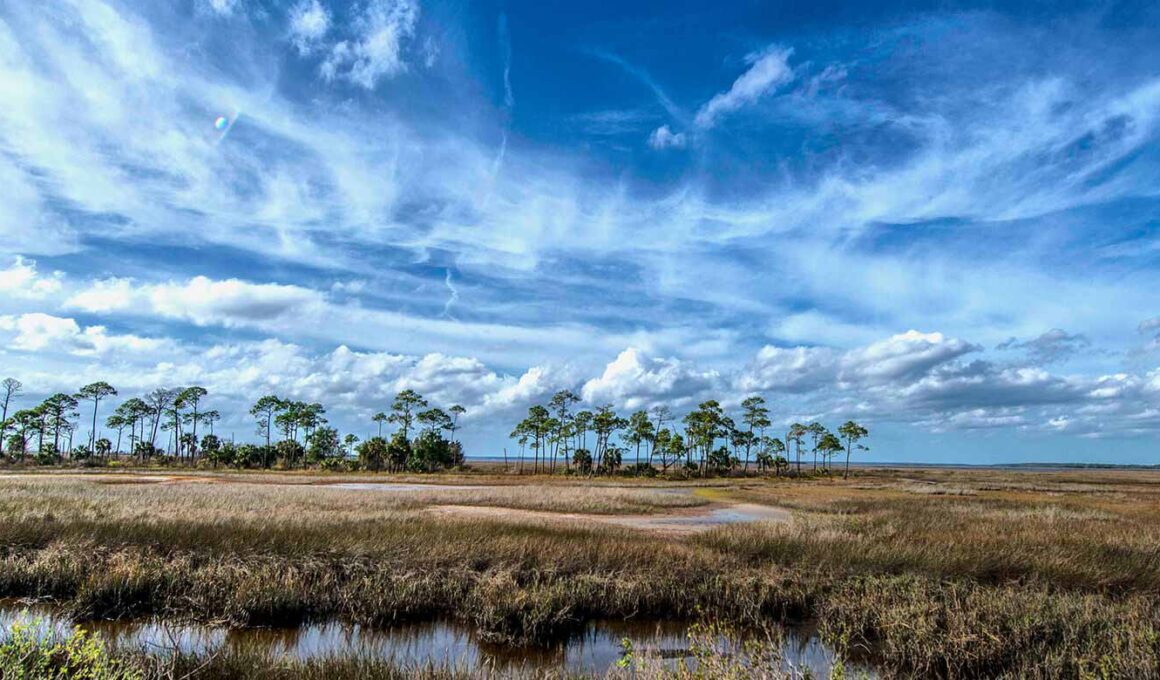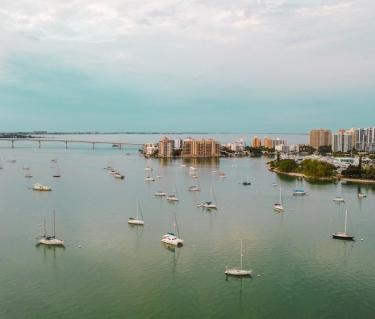For more than 50 years, the Agency on Bay Management (ABM) and its predecessor organizations have led the effort that transformed a bay in distress into an international success story. Now, with the growing recognition that Tampa Bay is not alone in facing the cumulative challenges of climate change and rapid population growth, the agency has voted to expand its borders north to Hernando County and south to Sarasota. The change was unanimously approved by the full Tampa Bay Regional Planning Council.
The changes include a new name, the Agency on Bay and Coastal Management (ABCM), along with multiple organizational changes that will impact the way meetings are run. “We have environmental challenges that transcend boundaries,” said Alana Todd, TBRPC principal environmental planner and staff to the ABCM.
The expansion now includes Hernando and Citrus counties and the Sarasota Bay Estuary Program, as well as many of the beaches that border the Gulf of Mexico. “The ABM has been doing a phenomenal job and it’s great to bring everybody together to address issues that affect us all,” said Woody Brown, mayor of Largo and vice chair of the ABCM.
Those counties and many of their beach communities already are members of the TBRPC, notes Wren Krahl, TBRPC executive director. “What happens in those estuaries and coastal zones impacts us too.”
Like its predecessor, the ABCM will bring together scientists, governmental and industrial representatives and environmentalists to share information and work to develop a united voice advocating for the health of the region’s bays and coastal areas. With its expanded geographic coverage, the ABCM is also likely to function as a clearinghouse with information and success stories.
“We all know we’re not just dealing with Tampa Bay – there’s a relationship between Sarasota Bay and the coastal ecosystems north of us,” said Barbara Sheen Todd, chair of the ABCM. “I don’t see this as another layer of management, and we’re not going to move in and try to take over. What we can do is step up if we see that one area needs more help – working together, we may be able to pull resources above and beyond what one entity can do alone. Most importantly, we’ll be able to share experiences that can make it easier for all of us to meet our goals.”
A clearinghouse for information would be an outstanding resource for the region, adds Chris Anastasiou, chief water quality scientist for the Southwest Florida Water Management District, which stretches from Citrus County south to Charlotte County. “We all have our own plans – and the last thing we need is another plan – but one of the things we could do moving forward is to compare notes and make sure we’re not duplicating or overlapping efforts.”
For Dave Tomasko, executive director of the Sarasota Bay Estuary Program, joining the ABCM was an easy decision. “We’re all connected,” he notes. “The things that are happening now in the Caloosahatchee River discharges (in Lee County) affect us in Sarasota Bay, and you guys as well because that’s where red tide originates.”
Sarasota Bay, which faces many of the same challenges as Tampa Bay, also is rebounding from years of neglect with major investments from local governments. “Over the past 15 years, we’ve invested $300 million in wastewater upgrades and stormwater retrofits. We’re really happy to learn more from you guys about the things we don’t have experience in, but we’ve got a lot of good experience and results from our nutrient management strategies. We view this as a two-way street – we think we can learn from you guys, but we also think maybe you guys can learn from us.”
In Hernando and Citrus counties – both part of the Nature Coast – natural resources are the primary economic driver. “Citrus County has a proud tradition of protecting its natural resources,” said James Toy, the county’s intergovernmental affairs manager. “We recognize that the long-term well-being of our region hinges on the protection and sound management of our coastlines, rivers and springs. We actively implement sound management practices to ensure their continued viability. We’re excited to collaborate with the Agency on Bay and Coastal Management and continue our successful partnership with the Tampa Bay Regional Planning Council.”
Hernando County – nicknamed Florida’s Adventure Coast– is also focused on protecting and creating natural resources as a top economic driver, said Carla Burrman, who heads the county’s Waterways and Aquatic Services and Environmentally Sensitive Lands programs. Along with the Weeki Wachee River and its spring protection zone, Hernando has five major parks. The newest effort is the construction of ten artificial reefs to increase opportunities for fishing and diving.
“We’re different communities with diverse resources and challenges, but working together will help all of us overcome our challenges and meet our goals, even in the face of booming populations,” chair Todd said.
To learn more and to sign up for meeting notices, visit the Agency on Bay and Coastal Management’s webpage: https://tbrpc.org/abcm/.


